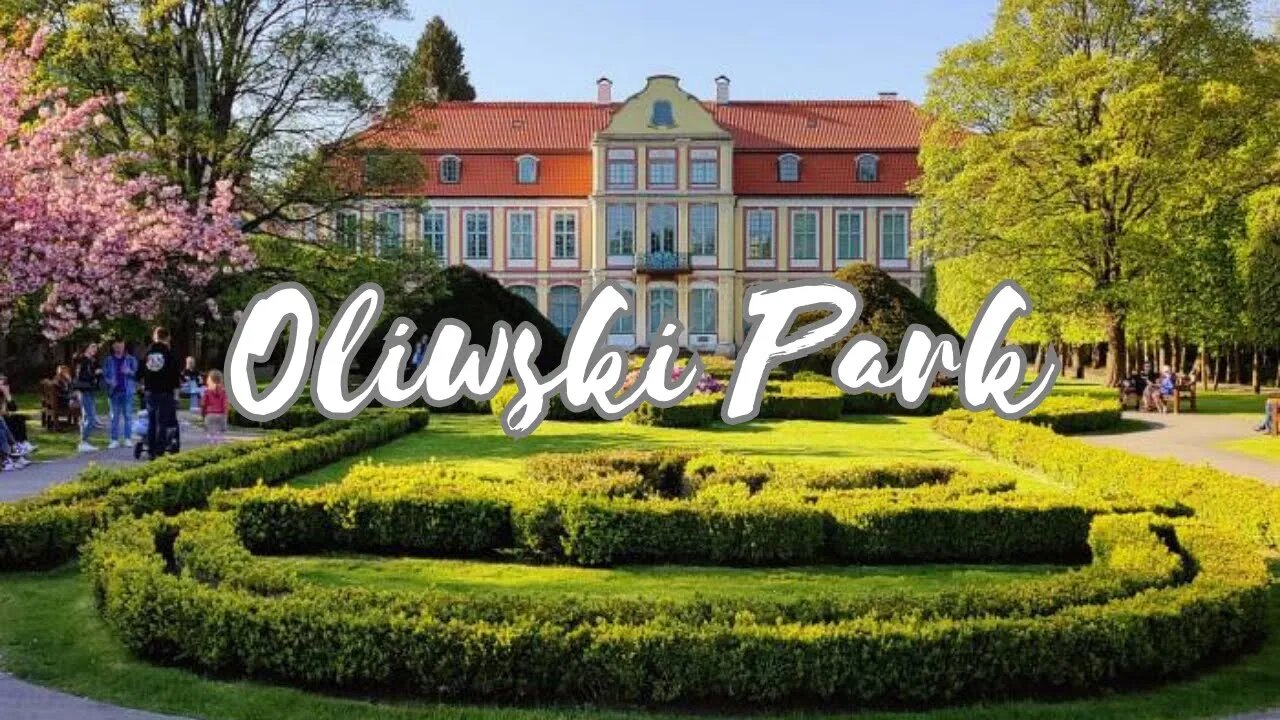Premium Only Content

Oliwski Park | Gdańsk | Poland
Checking out Oliwski Park and Oliwa Cathedral in Gdańsk. Poland, 21/06/23
The historic park was founded in the 15th century by the Cistercians as a monastery garden. The park is a very popular place for relaxation, picnic and enjoying its many sights.
The present shape of the park was established in the 18th century and has remained almost unchanged until today. Its most famous part is the Baroque (French) garden in front of the Abbots’ Palace with intricately decorated flower beds and shrubs sculpted into geometric figures. The trimmed rows of linden trees also come from this period. They are formed into green walls around the pond and along the canal and together make the landscape axis known as the Princely View. The rest of the park consists of an English-Chinese garden with numerous water reservoirs and a Japanese garden, a gazebo and sculpted azaleas, and pine trees.
Oliwa (Latin: Oliva; Kashubian: Òlëwa; German: Oliva) is a northern district of the city of Gdańsk, Poland. From east it borders Przymorze and Żabianka, from the north Sopot and from the south with the districts of Strzyża, VII Dwór and Brętowo, while from the west with Matarnia and Osowa. It is known for its medieval monastery with the Oliwa Cathedral, the 1627 Battle of Oliwa and the 1660 Treaty of Oliva.
Oliwa is a part of the northern Polish city of Gdańsk. It is bordered on the east by the Bay of Gdańsk (Zatoka Gdańska), on the north by the town of Sopot, on the south by the boroughs of Wrzeszcz and Zaspa and on the west by the chain of hills and forest surrounding Gdańsk. Except for the 'old city' Oliwa encompasses the boroughs of Polanki, Jelitkowo, Przymorze and Żabianka.
The population in 2004 was 19,824. The area is 18.23 km2 (7.04 square miles) with a population density of 1,087/km2 (2,820 per square mile). The landmark of Oliwa is the Cistercian-Cathedral complex with the Oliwa Cathedral, Baroque Abbot's Palace, Adam Mickiewicz Park, botanical garden and old granaries. The complex is listed as a Historic Monument of Poland.[2] The complex houses two branches of the National Museum in Gdańsk: the Department of Modern Art in the Abbot's Palace and the Ethnographic Department in one of the historic granaries. Other sights of Oliwa include the observation tower at the Pachołek Hill, the Gdańsk Zoo.
Oliwa Cathedral
It is not exactly known when Oliwa was established. Archaeological excavations suggest that the first settlement in this area was established in early Iron Age. The Cistercian Monks' tradition (unconfirmed by other sources) speaks of it as an early seat of power of the Pomeranian Princes. The name of this suspected burgh is unknown.
The first mention of Oliwa dates to 1186 when the Cistercians established a monastery there. The Cistercian Monks named it Oliva, either derived from an older Slavic name or the biblical Mount of Olives or olive tree. The monks received a deed of ownership from Duke Sambor I of Pomerania in 1188. The deed encompassed a number of villages, including Oliwa which became a monastic village for long centuries to come. The village's history is directly linked to the development of the monastery.
The village was raided by Old Prussians in 1224 (1226?) and 1234 (1236?) and by Teutonic Knights in 1246, 1247 and 1252. In 1308, the Polish coastal region was invaded by the Margraviate of Brandenburg, and in 1309 it was captured and occupied by the Teutonic Knights in 1309 after the Teutonic takeover of Gdańsk, however, Poland made attempts to regain the region. In 1350, the monastery suffered a fire. In 1433, there were incursions of Hussites during the Polish–Teutonic War of 1431–1435. In 1454, King Casimir IV Jagiellon reincorporated the territory to the Kingdom of Poland. The subsequent Thirteen Years' War ended in 1466 with a peace treaty, confirming the reincorporation of Oliwa to Poland. Oliwa was a private church village of the local monastery, administratively located in the Gdańsk County in the Pomeranian Voivodeship.
In 1588, 1653 and 1709 Oliwa was hit by epidemics. During the Polish–Swedish War of 1626–1629, Oliwa was invaded by Sweden in 1626, and the Battle of Oliwa was fought nearby in 1627, considered one of the greatest victories in the history of the Polish Navy. Oliwa was invaded by Sweden once again in 1656, and the Swedish war against Poland ended with the Treaty of Oliwa signed in the village in 1660. Oliwa was devastation once again during the War of the Polish Succession in 1733–1734.
As a result of the First Partition of Poland in 1772 Oliwa became part of Prussia, at that time it was inhabited by about 500 people and counting approximately 70 buildings. The Prussians confiscated all of the Cistercian Monks' possessions. The abbey prior received a salary and the monastery received financial reparations. In 1804 Oliva became an administrative headquarters for the surrounding villages and the administrator settled in the former abbey gatehouse.
-
 2:28:22
2:28:22
TheSaltyCracker
6 hours agoWelcome to WW3 ReeEEeeStream 06-13-25
109K244 -
 14:59
14:59
T-SPLY
9 hours agoKilmar Is Facing Trafficking Charges / Lawyer Demands His Release!
29.3K20 -
 2:04:42
2:04:42
TimcastIRL
6 hours agoU.S. Enters Israel Iran War In Defense Of Israel, Deaths CONFIRMED After Iran Strikes | Timcast IRL
179K351 -
 1:25:04
1:25:04
Laura Loomer
6 hours agoEP126: OPEN BORDERS INTIFADA
57.8K17 -
 LIVE
LIVE
Spartan
12 hours agoPro Halo Player | Scrims vs FaZe @ 3 EST then Ranked and/or SWTOR
208 watching -
 1:39:47
1:39:47
AlaskanBallistics
10 hours ago $1.07 earnedI Love this Gun Podast #44 Best 10mm Bear Protection Rounds!
17.6K2 -
 3:25:09
3:25:09
Barry Cunningham
9 hours agoHERE'S THE NEWS AND SCHEDULE FOR AN AMERICA FIRST WEEKEND!
66.2K62 -
 2:53:03
2:53:03
I_Came_With_Fire_Podcast
13 hours agoISRAEL STRIKES IRAN | PADILLA ARREST | CA SUES PRES. TRUMP
21.7K2 -
 4:18:35
4:18:35
S0lidJ
5 hours agoTis a Solid Friday Night
12K1 -
 3:14:27
3:14:27
Mally_Mouse
10 hours agoLet's Play!! - Plants vs. Zombies OG
12.5K1